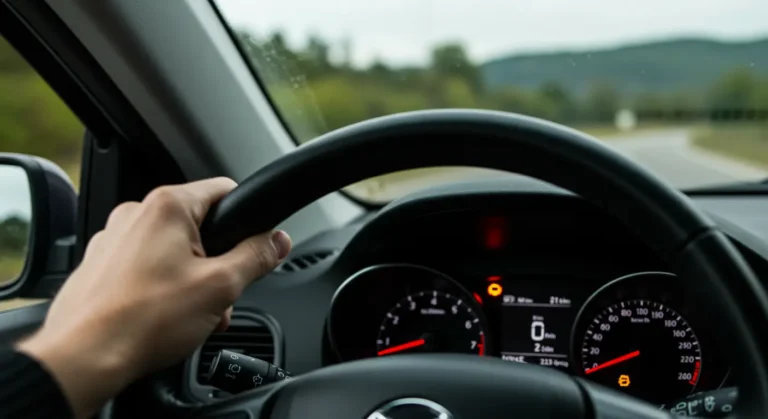Introduction
The check injection light is a common warning that many drivers encounter, but many aren’t sure what it means or how long they can drive with it on. If you’ve found yourself wondering, “how long can I drive with check injection light on?” this article is here to provide answers. The check injection light is an important signal from your car’s engine management system, and ignoring it could lead to further complications or costly repairs.
In this article, we will explain what the check injection light means, how serious it is, and what steps you should take if it lights up. Understanding the implications of this light can help you avoid putting your vehicle in a position where it’s unsafe to drive.
What Does the Check Injection Light Mean?
The check injection light, also known as the check engine light, is typically an indicator that something is wrong with the car’s fuel system or engine components. The term “injection” refers to the fuel injection system, which controls how fuel enters your engine. If there is an issue with this system, it can lead to poor fuel efficiency, engine misfires, and increased emissions.
When this light comes on, it means your car’s engine control unit (ECU) has detected a potential problem. The cause could range from a simple issue, such as a loose gas cap, to more serious problems like a failing fuel injector or damaged sensors.
How Serious Is It to Drive with the Check Injection Light On?
The seriousness of driving with the check injection light on depends on the specific issue at hand. If the light is flashing, it generally indicates a more severe problem, such as a misfire in the engine. This can lead to engine damage, so you should stop driving and have your car inspected immediately.
If the light is simply illuminated and not flashing, the problem might not be as urgent, but it still requires attention. You can continue driving for a short period of time, but it’s essential to schedule a diagnostic check as soon as possible to avoid further issues.
Key factors affecting how serious the problem is:
- Flashing light: Immediate action required.
- Solid light: Schedule an appointment soon, but short trips may be okay.
Can You Drive Long Distances with the Check Injection Light On?
If you are wondering whether it’s safe to drive long distances with the check injection light on, the answer depends on the severity of the issue. If the light is solid (non-flashing), you may be able to drive for a limited time without causing immediate harm to the engine. However, driving long distances with the light on is not recommended, as the problem could worsen, leading to reduced engine performance, decreased fuel economy, or more serious damage.
In summary:
- It’s okay for short trips, but avoid long distances if the light is on.
- If the light is flashing, do not drive at all and seek professional help.
What Are the Risks of Ignoring the Check Injection Light?
Ignoring the check injection light can lead to several problems. First, it may cause the vehicle to run inefficiently, leading to increased fuel consumption and higher emissions. Over time, this can affect the performance of your engine, resulting in costly repairs.
Here are some risks associated with ignoring the check injection light:
- Engine damage: Failing to address a misfire or faulty sensor can damage your engine.
- Poor fuel efficiency: Problems with the fuel injection system can lead to less efficient fuel use.
- Emissions issues: Ignoring the light can result in your car failing emissions tests, which could lead to fines or prevent your car from being legally driven.
What Should You Do When the Check Injection Light Comes On?
When the check injection light comes on, the first step is to read the code using an OBD-II scanner, which can identify the specific problem. If you don’t have a scanner, most auto repair shops can do this for you. Once the problem is identified, you can take appropriate action.
Here’s what you should do:
- Don’t panic: If the light is solid, you can drive for short periods, but if it’s flashing, stop immediately.
- Check for obvious issues: Sometimes, the light could be caused by a loose gas cap. Tightening or replacing it can solve the issue.
- Get your car checked by a professional: Have a mechanic check your car and diagnose the problem. If it’s related to the fuel system, they may need to replace a sensor or injector.
FAQs About Driving with the Check Injection Light On
Q1: Can I continue driving with the check injection light on?
Yes, if the light is solid, you can continue driving short distances, but you should get it checked soon. If the light is flashing, stop driving and have your car inspected immediately.
Q2: How long can I drive with the check engine light on?
You can drive for a short time, but it’s not recommended to drive long distances. The light indicates a problem that could worsen, so you should get it checked as soon as possible.
Q3: Can the check injection light mean something minor?
Yes, sometimes the light can be triggered by something as simple as a loose gas cap or minor sensor issues. However, it’s always a good idea to have it checked by a mechanic to rule out more serious problems.
Read More : Find a Fishing Boat UK: A Complete 2025 Guide for Every Budget and Size
Conclusion
So, how long can I drive with check injection light on? While it’s possible to drive for a short period with the light on, it’s not recommended, especially if it’s flashing. Ignoring the light can lead to expensive repairs, decreased performance, and other complications. If you notice the light on, get your car checked by a professional as soon as possible to avoid further damage.

